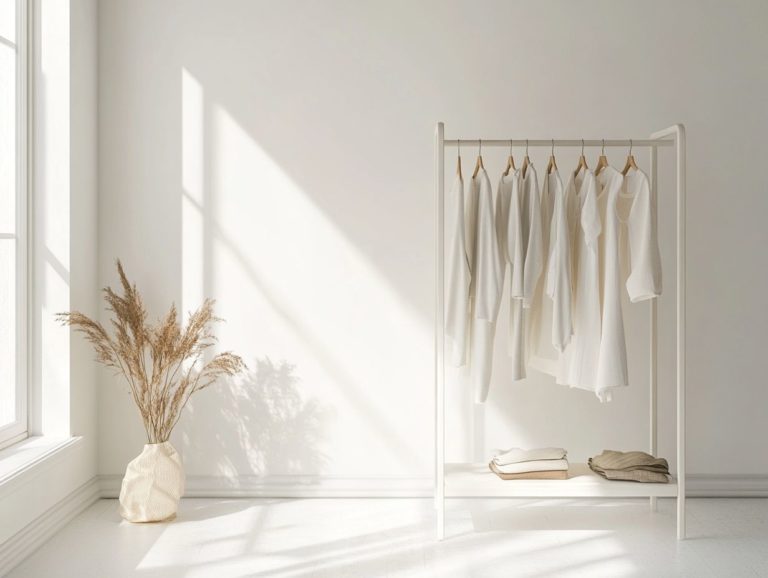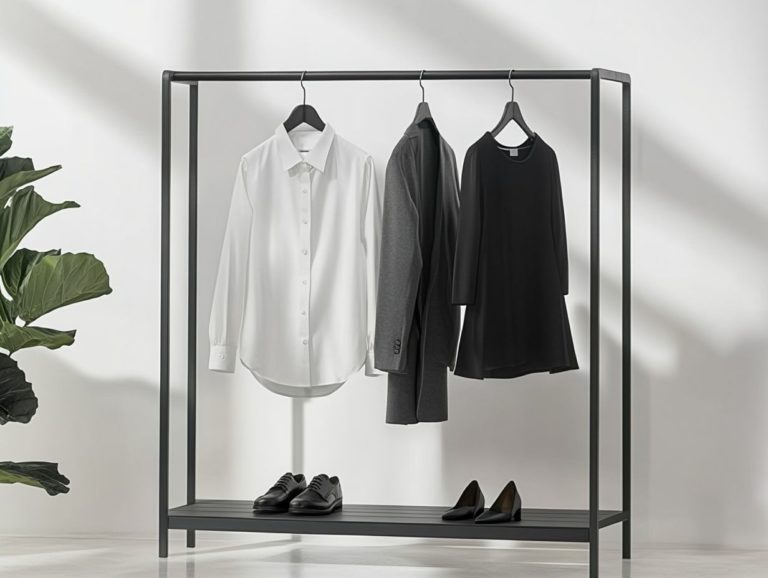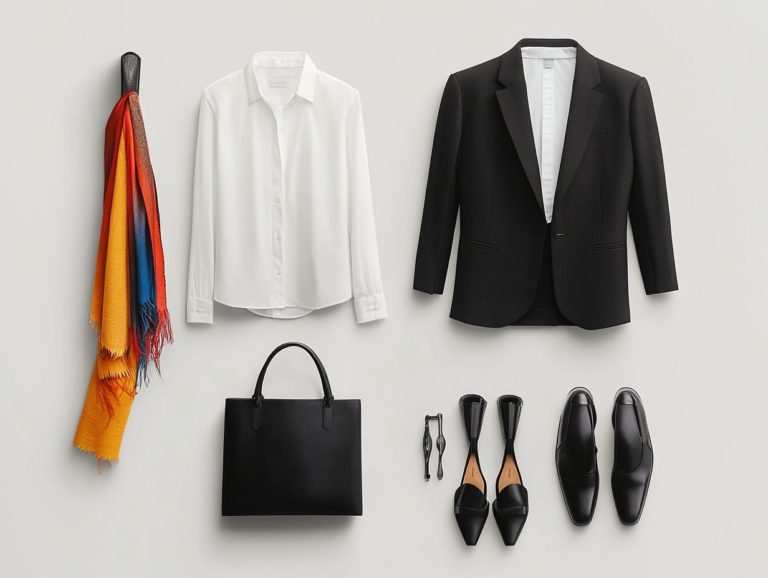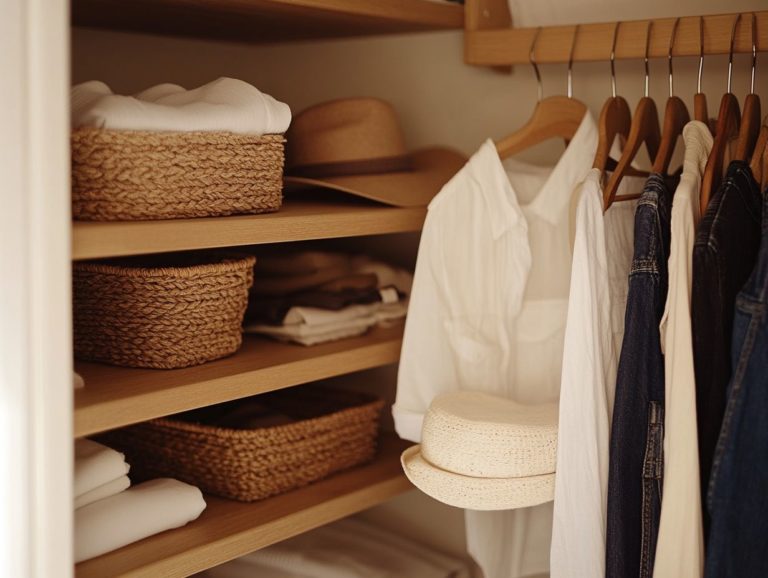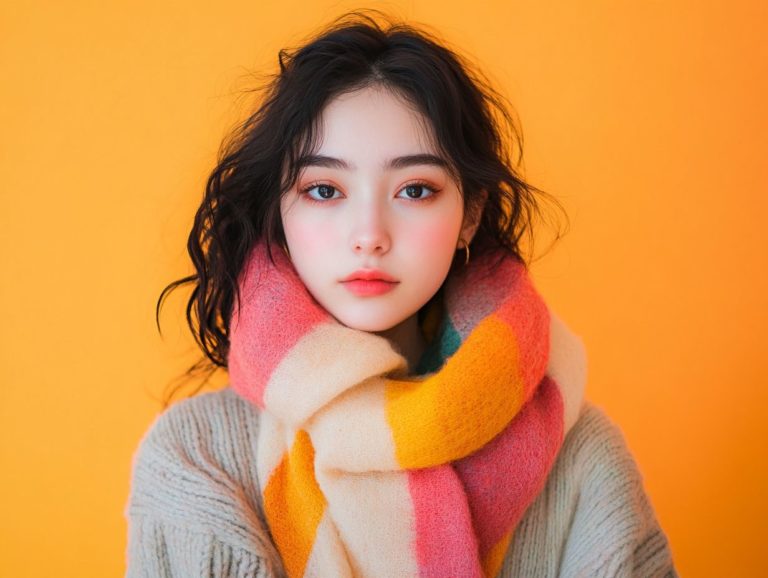How to Choose a Minimalist Color Palette
In a world brimming with vibrant hues and intricate designs, minimalist color palettes present a refreshing alternative. Get ready to explore the exciting world of minimalist color palettes! This article delves into the essence of a minimalist color palette and the myriad benefits it can bring to your web design projects.
It highlights essential considerations such as brand identity, color psychology, and typography while offering a step-by-step guide to crafting your own palette. You ll discover inspiring examples and practical tips to maximize the potential of minimalist colors.
Whether you re a seasoned designer or an eager beginner, this guide will empower you to select the perfect cohesive palette tailored to your needs.
Contents
- Key Takeaways:
- Understanding Minimalist Color Palettes
- Factors to Consider When Choosing a Minimalist Color Palette
- Creating a Minimalist Color Palette
- Examples of Minimalist Color Palettes
- Master Minimalist Color Palettes: Tips for a Stunning User Experience!
- Frequently Asked Questions About Minimalist Design
- What is a minimalist color palette and why is it important in graphic design?
- How do I choose a minimalist color palette that reflects my brand image?
- What colors should I avoid in a minimalist color palette to maintain a clean, legible look?
- Can I use more than three colors in a minimalist color palette while preserving the overall experience?
- How do I incorporate texture in a minimalist color palette for optimal line and line spacing?
- Can I use a minimalist color palette for any type of design, including digital products?
Key Takeaways:
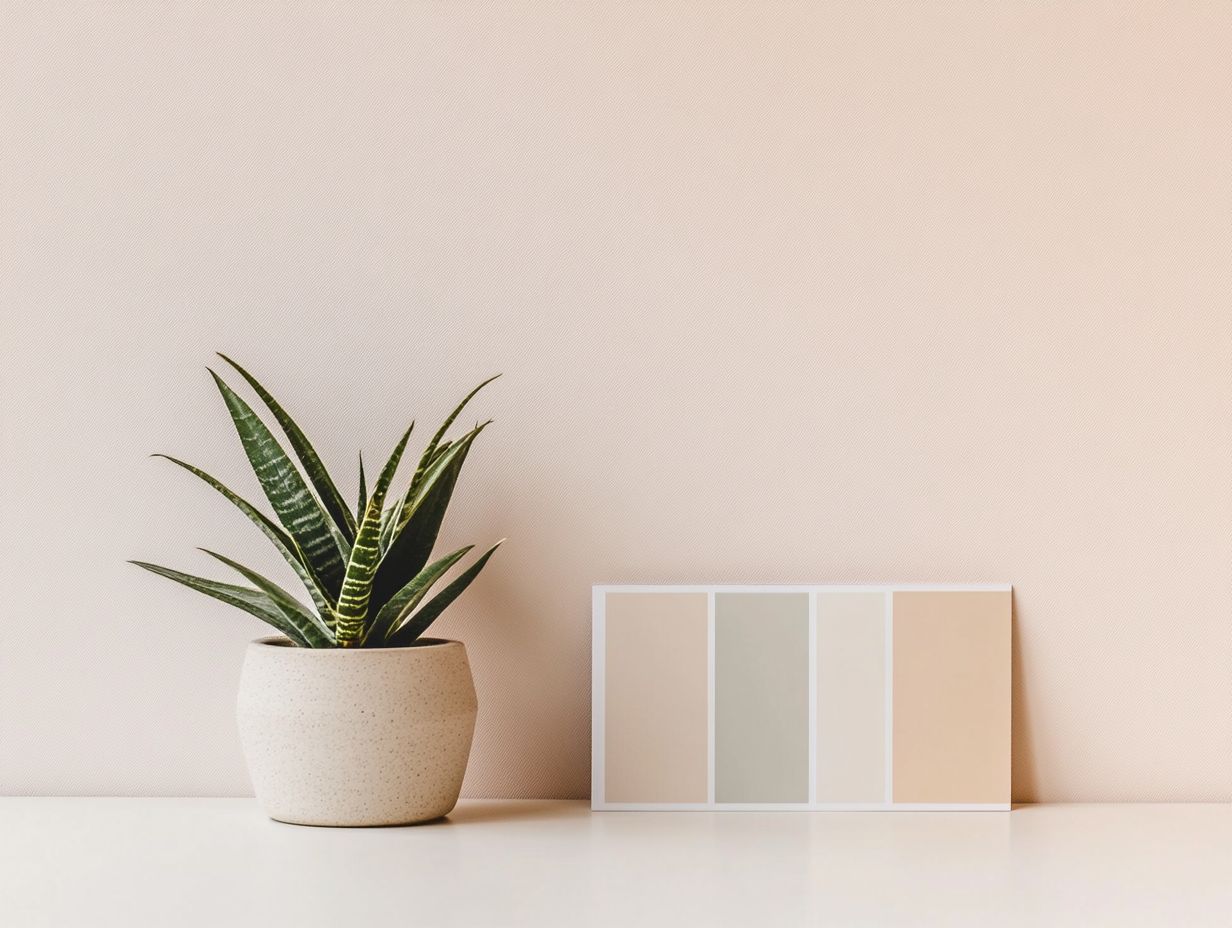
- A minimalist color palette consists of a limited number of colors that create a clean and simple aesthetic.
- Consider your brand identity, target audience, color psychology, and balance when choosing a minimalist color palette.
- Use a step-by-step guide to create your own minimalist color palette. Don’t be afraid to incorporate texture and patterns for added interest.
Understanding Minimalist Color Palettes
Grasping the nuances of minimalist color palettes is crucial for establishing a powerful brand image and elevating the overall experience across digital products. A thoughtfully curated palette that incorporates soft colors, soft pastels, and neutral colors can profoundly impact user perception and engagement in web design.
By skillfully applying color theory, you can create a tranquil atmosphere that reduces things that draw your attention away and fosters a sense of calm and clarity. These palettes not only embody the principles of minimalist design but also resonate with current trends in graphic design and digital marketing, underscoring the vital role that color choices play in modern aesthetic appeal.
What is a Minimalist Color Palette?
A minimalist color palette is a thoughtfully curated selection of colors that aligns with the principles of minimalist design, emphasizing simplicity and functionality while still being visually appealing, especially with minimal typography.
This approach embodies the essence of clean, legible designs that convey messages effectively without overwhelming the viewer. By strategically employing a limited range of colors, you can evoke emotions and enhance user experience, ensuring that the spotlight remains on the content rather than unnecessary visual distractions.
Such deliberate color choices not only establish a cohesive visual identity but also foster a sense of harmony across various design elements and reinforce the sustainable design principles.
In essence, a minimalist color palette serves as the backbone of any effective design strategy, guiding users through their experience with clarity and intention.
Benefits of Using a Minimalist Color Palette
Using a minimalist color palette brings a wealth of benefits for your brand image and user experience, making it an increasingly favored choice in both web design and graphic design.
This approach streamlines visual communication, enhancing user engagement by drawing attention to essential content without overwhelming the viewer, promoting a serene atmosphere. When you embrace a limited color scheme, you often convey a sense of sophistication and trustworthiness, which can significantly elevate your brand’s standing in a competitive market, making your design more energy-efficient.
Fewer colors can also lead to lower energy consumption in screen displays, aligning perfectly with the rising consumer interest in environmental sustainability and reducing your carbon footprint. By prioritizing aesthetics that are both visually appealing and eco-friendly, you can forge deeper connections with your audience on multiple levels.
Don’t miss out on the chance to elevate your brand image with a minimalist color palette!
Factors to Consider When Choosing a Minimalist Color Palette
Selecting a minimalist color palette involves several key considerations that can influence your brand identity and overall user experience.
Understanding color psychology is essential. Different colors evoke distinct emotions and perceptions, shaping how your audience engages with your digital product.
Ensuring the right contrast and balance among your color selection is vital for creating visual interest. A well-curated palette can elevate your brand’s image and foster a captivating online experience, especially when you know how to use color in minimalist dressing.
Brand Identity and Target Audience

Brand identity is a cornerstone of any digital product and influences your color choices when crafting a minimalist palette.
Understanding the relationship between brand identity and your target audience guides the emotions that specific colors evoke. For example, a tech company aiming at a younger demographic might lean towards vibrant hues that radiate energy.
Conversely, a financial services brand may gravitate towards more subdued tones, projecting trustworthiness and stability.
Select colors that resonate with your intended audience to elevate user perception and create a memorable experience that aligns with their expectations.
Color Psychology
Color psychology dramatically influences how you perceive a brand and its offerings, especially in minimalist design.
Brands can subtly influence your emotional responses and behavioral tendencies by strategically using specific hues and tones. For instance, warm colors like red and orange often spark feelings of excitement, while cooler tones like blue and green can foster calmness.
Each shade carries its own psychological weight, often intertwined with cultural associations and personal experiences. This makes it essential for brands to thoughtfully select their color palettes to resonate with you and enhance your overall user experience.
Contrast and Balance
Achieving the right contrast and balance in a minimalist color palette is essential for visual interest.
A carefully curated color scheme guides the viewer’s eye and prevents overwhelming sensations. By selecting hues that complement each other, you cultivate a serene yet engaging atmosphere.
For instance, using subtle neutral colors alongside bold accent colors creates the desired tension between simplicity and vibrancy.
It’s crucial to consider not just the colors themselves but also their placement within the layout to maintain harmony.
Creating a Minimalist Color Palette
Crafting a minimalist color palette demands a careful method that weaves together essential design elements and principles of color theory, including HEX codes, to ensure a cohesive visual identity.
Step-by-Step Guide
Creating a minimalist color palette requires a thoughtful approach to color selection. Ensure it aligns perfectly with your desired minimalist aesthetic.
Start by brainstorming ideas that resonate with your vision and the mood of your space or design. Consider incorporating natural materials. Draw inspiration from natural elements, artwork, or existing designs that showcase simplicity.
Next, delve into color theory to understand how different hues interact and evoke emotions. Once you’ve compiled a preliminary list, choose a few main colors and experiment with their combinations using mock designs or mood boards. Pay attention to contrast and harmony throughout this process.
Narrowing your choices to a cohesive set will capture that minimalist charm without overwhelming the senses.
Examples of Minimalist Color Palettes

Ready to be inspired? Exploring examples of minimalist color palettes can offer you valuable inspiration as you craft aesthetically pleasing and effective visual identities.
By immersing yourself in these refined color schemes, you can elevate your design work and create a striking impact!
Inspiration and Ideas
Seeking inspiration for minimalist design can enhance your approach to selecting the perfect color palettes. Look for muted tones paired with striking accent colors for added visual interest.
Designers often draw inspiration from a myriad of sources nature, contemporary art, and architectural elements. These serve as exceptional starting points for crafting harmonious color schemes.
Successful projects frequently draw from renowned brands that apply these principles masterfully. Consider examples like Apple’s sleek product design or Muji’s functional aesthetics, both of which embrace Japanese minimalism. Observing how these brands blend muted colors with bold accents highlights the impact of intentional design choices.
Create spaces that are visually captivating and exude a sense of tranquility and balance, showcasing the principles of Scandinavian minimalism.
Master Minimalist Color Palettes: Tips for a Stunning User Experience!
Employing a minimalist color palette demands careful consideration of design elements and techniques that elevate overall user experience. Thoughtfully selecting colors creates a harmonious and engaging environment that captivates users while maintaining clarity and sophistication.
Incorporating Texture and Patterns for Visual Interest
Incorporating texture and patterns into your minimalist design adds depth and visual intrigue while maintaining elegance. Layer materials like wood, fabric, or metal to achieve a harmonious balance that captivates the eye.
A subtle geometric pattern on a feature wall can serve as a captivating backdrop, elevating the overall aesthetic. Textured surfaces can draw attention to specific elements, making them pop and inviting interaction.
Introducing tactile materials enriches the visual landscape and enhances the user experience. This allows you to form a personal connection with your surroundings.
Start crafting your ideal color palette today!
Updating and Refreshing Your Palette for a Cohesive Look
Updating and refreshing your minimalist color palette is crucial for keeping your brand identity relevant. It also enhances the user experience over time.
To achieve this, make it a habit to regularly explore new design styles. Pay close attention to user preferences.
One effective strategy is to incorporate seasonal hues that resonate with current styles. This allows for subtle yet impactful changes. By experimenting with contrasting shades, you can create a fresh visual dynamic while still staying true to a minimalist approach. For more insights, consider how to use color theory in your capsule wardrobe.
You can also use tools like color trend reports and interactive design software. These resources help ensure your updates align with evolving tastes. Finding the perfect balance between innovation and simplicity is essential for keeping your brand exciting and relevant!
Frequently Asked Questions About Minimalist Design
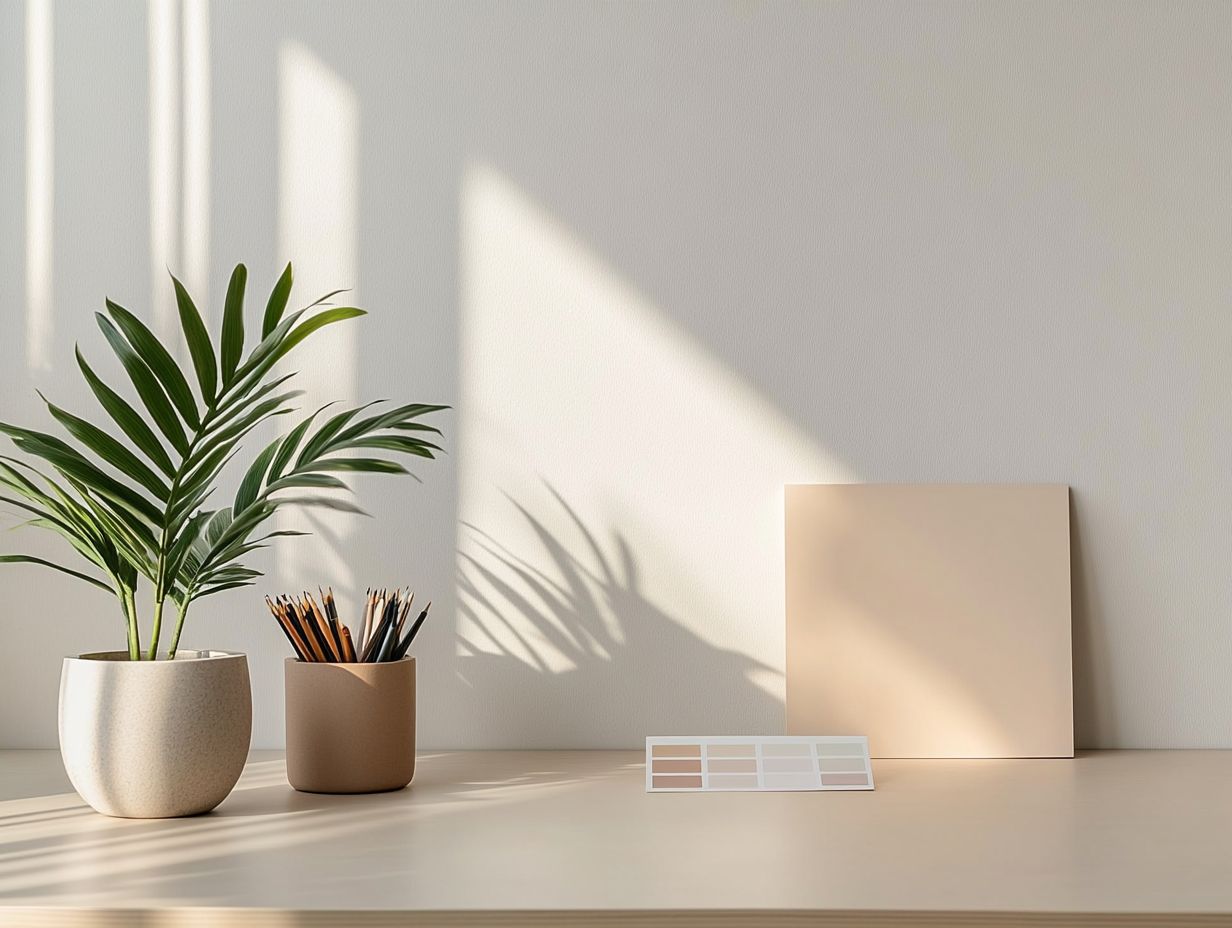
What is a minimalist color palette and why is it important in graphic design?
A minimalist color palette refers to a limited selection of colors used in design or art, often with neutral or muted tones.
How do I choose a minimalist color palette that reflects my brand image?
Start by determining the mood or feeling you want to convey with your design. Then, choose a maximum of three colors that complement each other and align with your desired mood.
What colors should I avoid in a minimalist color palette to maintain a clean, legible look?
Bright, bold colors may clash with the minimalist aesthetic. It’s best to stick to muted or neutral tones for a more cohesive look.
Can I use more than three colors in a minimalist color palette while preserving the overall experience?
While a minimalist color palette typically consists of three colors, you can add black or white as an accent. However, try to limit the overall color scheme to no more than four colors.
How do I incorporate texture in a minimalist color palette for optimal line and line spacing?
Texture can add depth and interest to a minimalist color palette. Consider using different shades and tones of your chosen colors or incorporating materials like wood or fabric to add texture.
Can I use a minimalist color palette for any type of design, including digital products?
Yes, a minimalist color palette can be applied to various types of design, from branding to interior design. It’s a versatile and timeless approach that can work for many styles and purposes.
Ready to refresh your palette? Let’s dive in!


